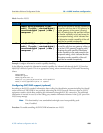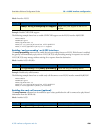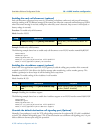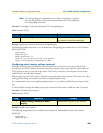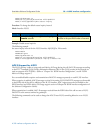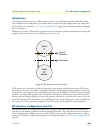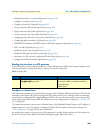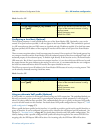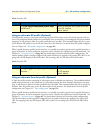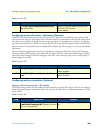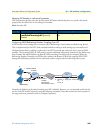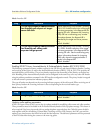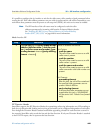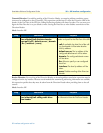
SIP interface configuration task list 443
SmartWare Software Configuration Guide 39 • SIP interface configuration
• Binding the interface to a context SIP gateway (see page 443)
• Configure a remote host (see page 443)
• Configure a local host (Optional) (see page 444)
• Using an alternate VoIP profile (Optional) (see page 444)
• Using an alternate SIP profile (Optional) (see page 445)
• Using an alternate Tone-Set profile (Optional) (see page 445)
• Configuring early call connect /disconnect (Optional) (see page 446)
• Configuring address translation (Optional) (see page 446)
• SIP REFER Transmission (& ISDN Explicit Call Transfer support) (Optional) (see page 451)
• AOC over SIP (Optional) (see page 453)
• Enable the session timer (Optional) (see page 454)
• Enable the SIP penalty-box feature (Optional) (see page 454)
• Initiating a new SIP session for redirected SIP calls (Optional) (see page 454)
• Configure the SIP hold method (Optional) (see page 455)
Binding the interface to a SIP gateway
Every SIP interface must be explicitly bound to a context SIP gateway. It defines the transport interfaces to be
used to send requests and also from where it expects to receive incoming calls.
Mode: Interface SIP
Configure a remote host
The remote host parameter is used to build the host part of the To-Header-URI and the Request-URI. All calls
forwarded to the context SIP gateway through this SIP interface will be sent to that host unless an outbound
proxy has been configured for the outgoing Request-URI. In this case, all requests will be sent to the specified
proxy independent of the Request-URI. For details about proxy configuration, see Chapter 51, “Location Ser-
vice” on page 607.
The remote host parameter may contain a Domain Name, a Full Qualified Domain Name or an IP Address. If
domain names are used, do not forget to configure the DNS client for address resolving. See Chapter 28,
“DNS configuration” on page 304 for more information.
An optional port number can be entered on this command. It specifies the destination port of the requests to
be sent. If no port has been defined, the default SIP signaling port 5060 will be taken.
Step Command Purpose
1
[node](if-sip)[if-name]# [no] bind context
sip-gateway gw-name
Binds the interface to a context SIP gateway.
The no form of the command removes an
existing binding.
Default: none



